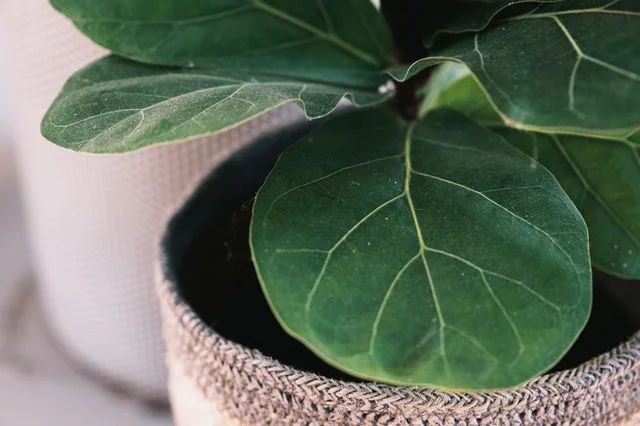Table of Contents
How to care for Ficus Lyrata
The Ficus Lyrata is a plant that works surprisingly well as a house plant. What it lacks in width, it makes up for in length, enabling you to fit it into most spaces in your home.
Whether you live in a large house or a small apartment, this plant will give a fantastic tropical vibe to your living space.
Even if the rest of your house tends to use basic colors, Ficus Lyrata will provide your home with a much-needed splash of green, to bring you closer to nature.
What does it take to care for Ficus Lyrata?
Looking at Ficus Lyrata is much easier than you probably think. Many people believe that when looking after tropical plants, you need to be some kind of botanical expert. But this is not the case.
So long as you have the little time it requires to be watered and fertilized, anyone will be able to look after this plant.
What is Ficus Lyrata’s natural habitat?
Before we start talking about caring for the plant, I think it’s important to consider where it comes from originally.
By understanding the plant’s natural habitat, we can better understand what kind of conditions we might need to provide for it to survive.
Ficus Lyrata is native to Western Africa. In the wild, it can be found anywhere from Cameroon to Sierra Leone.
As you can probably imagine, this wild version of this plant is much bigger than the version most people will have in their homes.
Ficus Lyrata lives in a lowland tropical forest. An area filled with moisture, heat, and plenty of sun. But don’t be thinking you need to live in a rainforest to look after it.
What are the light requirements for Ficus Lyrata?
The most important thing with this plant is to give it light. Should the lighting be too dim, it will die rapidly, so it’s essential to keep it in a room that gets plenty of natural sunlight.
The best kind of light for this plant is bright but indirect. You can create indirect sunlight by lining your window with other plants (or even just general tat).
Perhaps this plant might not be an excellent option for people who live in cold places such as Alaska, but it will be perfect if you live somewhere hot.
What temperature should I keep my Ficus Lyrata at?
Although most plants are adaptable to various temperatures, they will have a minimum temperature they need to survive. With Ficus Lyrata, if it’s less than 55F, you won’t stand much chance of survival.
The best temperature for your green friend is anywhere between 60 to 75F. But if it ever goes a bit higher, or a bit lower, it shouldn’t matter too much.
What kind of soil is best for Ficus Lyrata?
The ideal soil for Ficus Lyrata will be moist at all times. As you can imagine, living in the rainforest, there is rarely a lack of water in the ground. However, this doesn’t mean you should over water, too much and it might get root rot.
The ideal PH levels for this soil will be between 6 to 8. But you don’t need to be too exact.
It thrives in loamy soil, you can create this by mixing sand, silt, and clay. This will provide the perfect conditions for it to live in, most similar to its natural habitat.
Does Ficus Lyrata like humidity?
Ficus Lyrata lives in the rainforest, so it’s used to some humidity in the air. The best room to keep this plant in would be a naturally humid room, our recommendation is to keep it in the bathroom. But so long as it’s a room that’s reasonably humid most of the time, you should be fine.
If you don’t have anywhere humid that you can keep it, you can always use a spray bottle to keep it well misted, and trick it into thinking it lives in a humid room.
How do you water Ficus Lyrata?
This plant needs to be watered 2-3 times a week. More than a lot of other houseplants. However, you need to be careful not to overwater it. If you notice it’s sitting in a pool of water, you’ve given it too much, and now run the risk of root rot.
If you notice it’s starting to wilt and/or lose its color, that’s a sign you’ve not watered it enough.
How do I fertilize Ficus Lyrata?
Ficus Lyrata needs to be fertilized more often than most other house plants. During the growing season, you should make sure you’re giving it fertilizer every other week.
And when you do, provide it with something designed for green plants- just make sure it’s not too strong.
By fertilizing it, you’ll be adding minerals to the soil that it will need to have it’s beautiful shine and vibrant colour.
Extra tips for Ficus Lyrata care
As with most plants, there may be challenges that you will need to overcome with Ficus Lyrata. As with most plants, being able to overcome these challenges is not as hard as you may imagine.
If you follow this advice, there will be no need to panic if anything bad happens to your plant.
Pests and Diseases
The most common form of pest on Ficus Lyrata is the spider mite. Should this happen, just spray it with the least chemically potent pesticide. This will kill the mites without damaging the plant.
It can also be susceptible to bacterial and fungal diseases. It will show you it has these kinds of issues by showing you spots and dark patches. Should you notice any of them, treat immediately with the appropriate chemicals.
To avoid problems in the first place, make sure it’s in a room with good air circulation, and avoid dampness. Poor air circulation and dampness provide the ideal conditions to mould to thrive.
Pruning
Some of you might want to prune your plants, this helps them keep their shape, and makes them always look pretty. When pruning Ficus Lyrata, be sure to always do it in the Spring when it’s most capable of growing things back.
When you cut anything, make sure you’re using sharp tools, and using dull tools can crush the stems, making it very hard for it to grow back.
Propagation
Whether you want more than one Ficus Lyrata in your home, or you want to give them away to friends, here’s how you turn one plant into 2.
Firstly, take one of the leaves off, trim the end, and allow it to dry overnight. Place it into a small pot of water, upright, and wait for 3-4 weeks, or until you notice roots growing.
When this happens, move it into a small pot to continue to grow until it has reached maturity.
FAQ
Is Ficus Lyrata an indoor plant?
Yes, Ficus Lyrata is an indoor plant. Although obviously in the wild, they spend all of their time outdoors. They are very popular as indoor plants due to how well they cope in that kind of environment.
If you have any doubt that Ficus Lyrata is an indoor plant, just look online. There are millions of people who keep them, and most of them do absolutely fine.
Does Ficus Lyrata need sunlight?
Yes, Ficus Lyrata needs sunlight. All plants do, it’s their version of food.
With Ficus Lyrata, the type of sunlight it needs is bright and indirect. You can provide this by keeping it in a room with plenty of natural sunlight but blocking some of the window with other plants.
How do I care for Ficus Lyrata?
To care for you Ficus Lyrata, keep it in a loamy soil. The room it should be kept in should be between 60-75F at most times, and plenty of humidity (if not, you will need to mist it).
Make sure to quickly treat any pests or diseases, so they don’t have a chance to kill the plant. And when you prune, do so with sharp tools.
Water it 2-3 times a week, making sure not to overdo it, but ensuring the soil is moist at all times. During the growing season, every fortnight give it a weak fertilizer for green plants.
Should I mist my Ficus Lyrata?
Usually, there wouldn’t be much need to mist Ficus Lyrata. However, if you notice some of its leaves have become dry, it could be wise to give it a mist, this will make it feel like it’s at home in the rainforest.
Misting might be a wise idea if you don’t have a humid room in your house, or you want to keep it in a room that doesn’t get a lot of humidity.
Is Ficus Lyrata poisonous to dogs?
Ficus Lyrata is poisonous to both dogs and humans. Thankfully, this poison is hidden within the tough leaves, and will only hurt you if you eat it.
Most dogs will know not to eat pot plants, but if yours might be tempted to give it a nibble, it’s best to keep Ficus Lyrata in a room that your dog is not allowed into.
So long as you remember not to eat it, you don’t have to worry about getting sick. Just remember, whilst some plants can be eaten, Ficus Lyrata is undoubtedly not one of them!
Does Ficus Lyrata bear fruit?
Unfortunately, if you keep Ficus Lyrata indoors, it’s doubtful that it will bear fruit. In the wild, the larger version of Ficus Lyrata can bear fruit, but if you manage to get fruit from the houseplant, you’re a much better gardener than I am.
Photo by Lachlan Ross from Pexels


